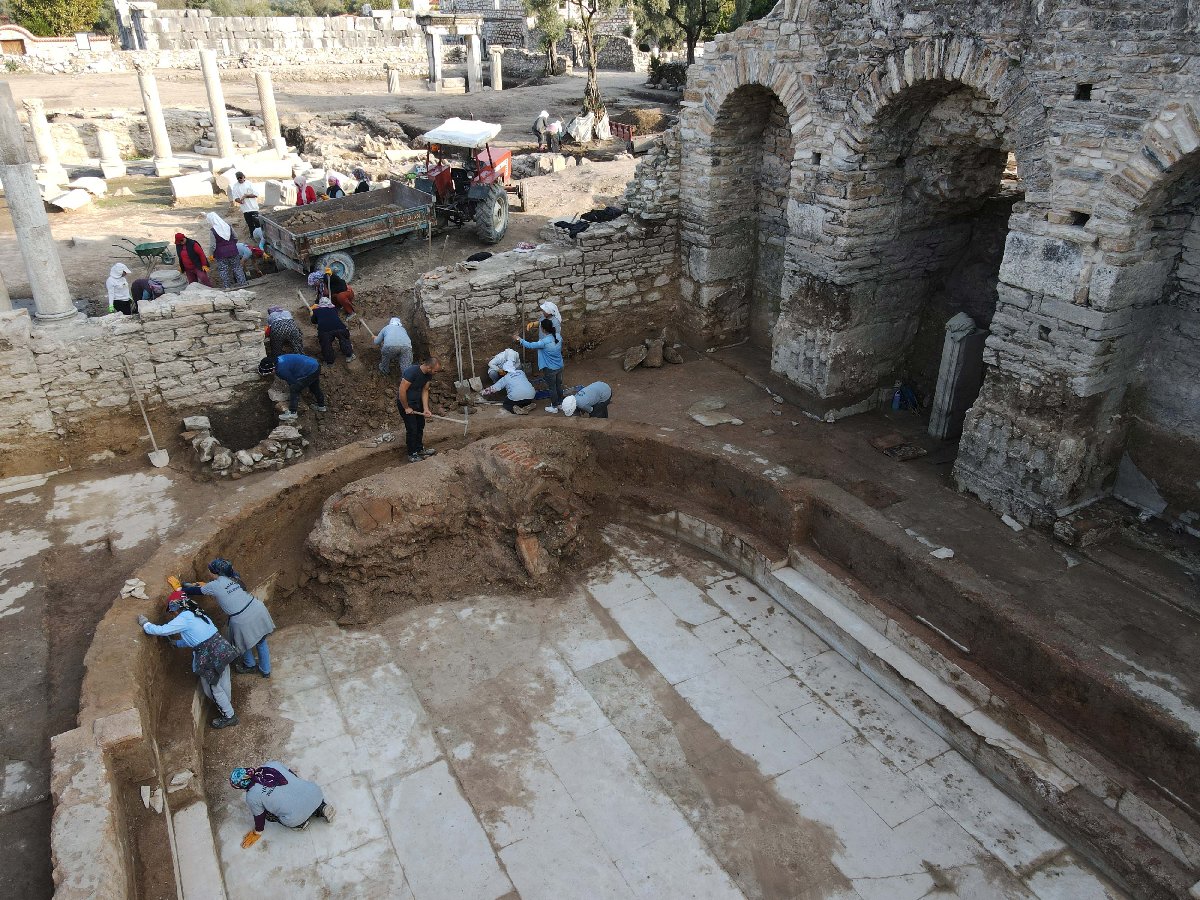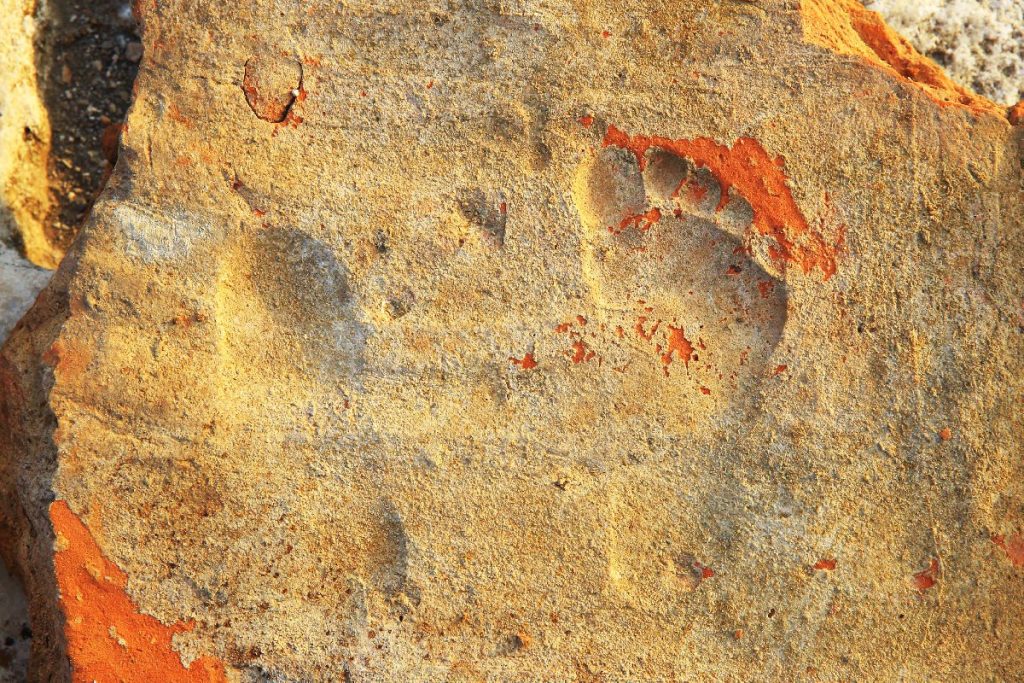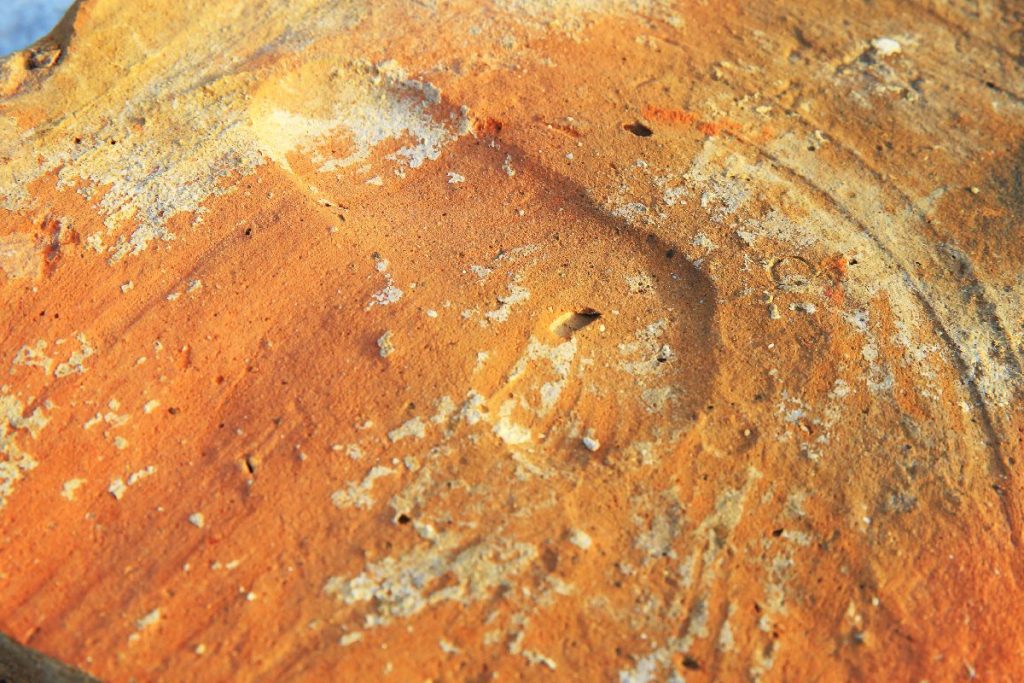
1900-year-old child footprints were found in Stratonikeia, the City of Immortal Loves
In ongoing excavations in the ancient city of Stratonikeia, known as the City of Immortal Loves, 1900-year-old child footprints have been discovered.
Located 7 kilometers west of Yatağan District in Muğla Province, Stratonikeia is situated within the boundaries of Eskihisar Village.
The city is also known in the ancient period as the City of Gladiators.
In the first quarter of the 3rd century BC, King Seleucus I Nicator named the city after his wife, Stratonike.
📣 Our WhatsApp channel is now LIVE! Stay up-to-date with the latest news and updates, just click here to follow us on WhatsApp and never miss a thing!!
The settlement, which began in the Late Bronze Age, extends through the Archaic, Classical, Hellenistic, Roman Empire, Byzantine, Ottoman, and Turkish Republic periods.

Excavations in Stratonikeia, which is on the UNESCO World Heritage Tentative List, continue under the direction of Prof. Dr. Bilal Söğüt.
Prof. Dr. Bilal Söğüt reminded that in previous years they had unearthed the western street and a toilet for 92 people and said: “This year, we started working on the gym and sports sections, including the apodyterium at the entrance of the Roman bath located next to the western street and the frigidarium with pool. We excavated the frigidarium section.” We completed it.”
“We uncovered niches around the pools and other sections in the frigidarium section of the bath. We also found the grave of a person believed to have supported the bath inside the structure. We unearthed materials related to the construction of the current works in the 2nd century AD and the arrangements made in the bath in the same century.”

“Especially within the remnants from the Roman period, we came across footprints dating back 1900 years on the bricks used in the vaults. These findings were incredibly significant for us. In fact, we identified that these footprints belonged to three different children, approximately 2-3 years old.”

“Until now, in our previous excavations, we’ve discovered various depictions on roof tiles and wall bricks, but it’s the first time we’ve come across such a footprint. These footprints were coming from different directions and not all were in the same direction. This was another fascinating development for us.”
Cover Photo: AA
You may also like
- A 1700-year-old statue of Pan unearthed during the excavations at Polyeuktos in İstanbul
- The granary was found in the ancient city of Sebaste, founded by the first Roman emperor Augustus
- Donalar Kale Kapı Rock Tomb or Donalar Rock Tomb
- Theater emerges as works continue in ancient city of Perinthos
- Urartian King Argishti’s bronze shield revealed the name of an unknown country
- The religious center of Lycia, the ancient city of Letoon
- Who were the Luwians?
- A new study brings a fresh perspective on the Anatolian origin of the Indo-European languages
- Perhaps the oldest thermal treatment center in the world, which has been in continuous use for 2000 years -Basilica Therma Roman Bath or King’s Daughter-
- The largest synagogue of the ancient world, located in the ancient city of Sardis, is being restored











Leave a Reply